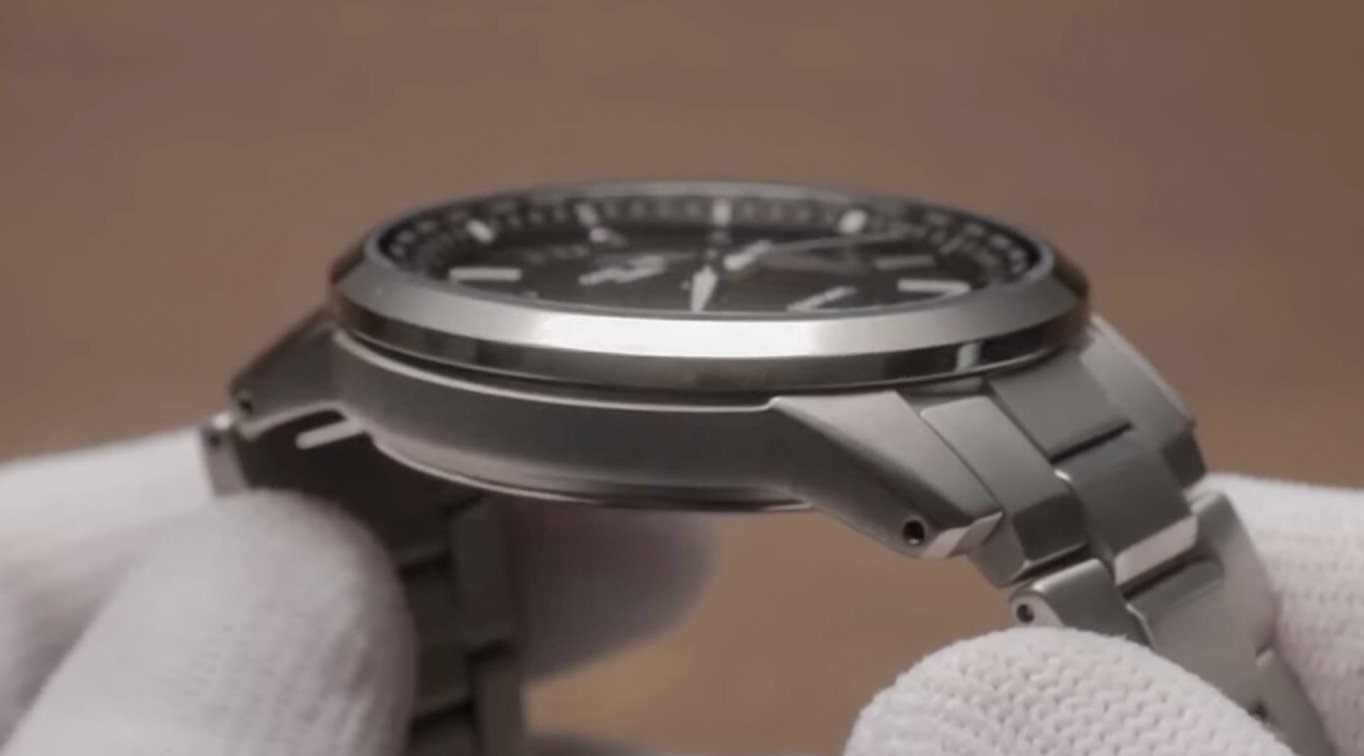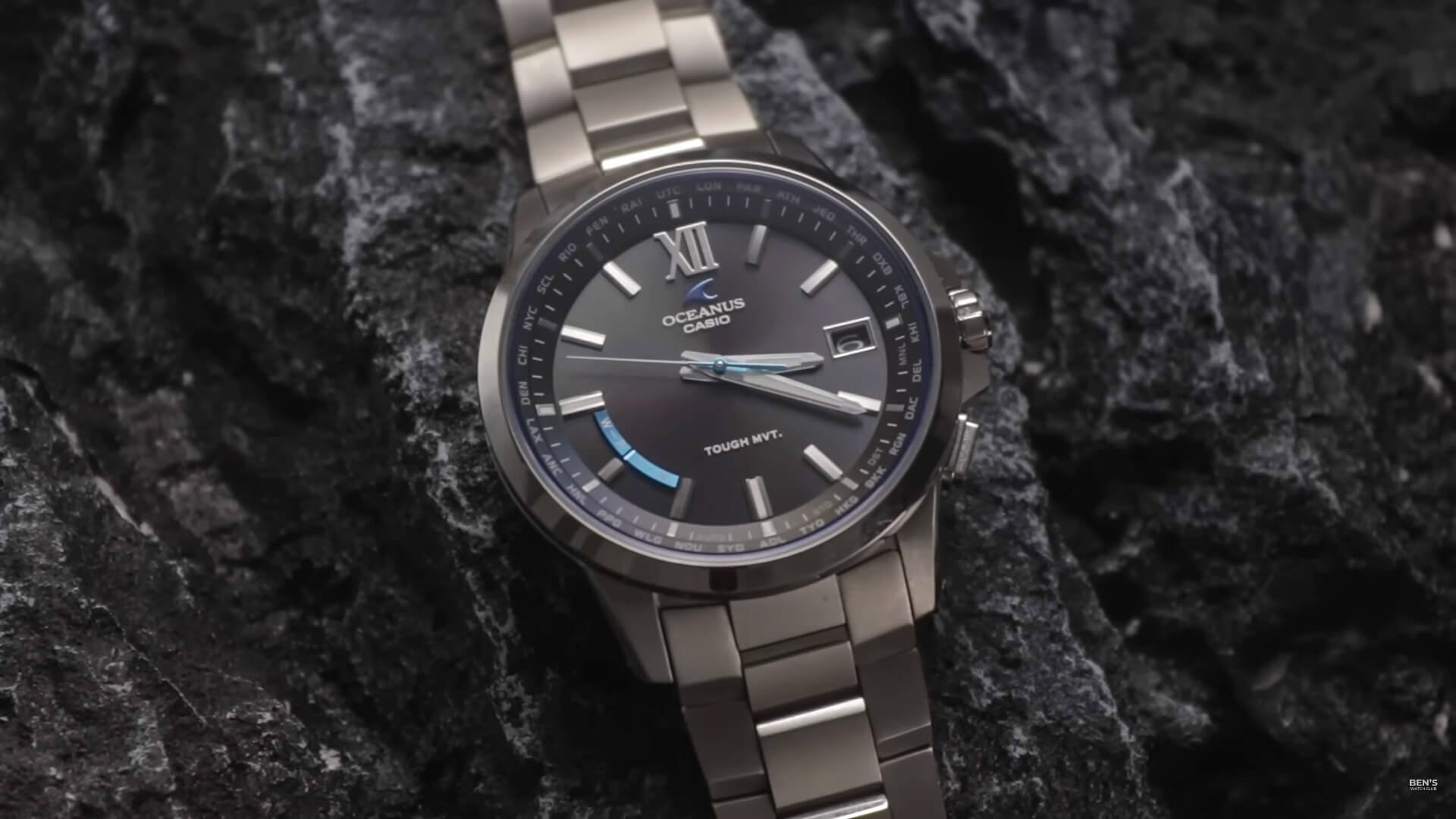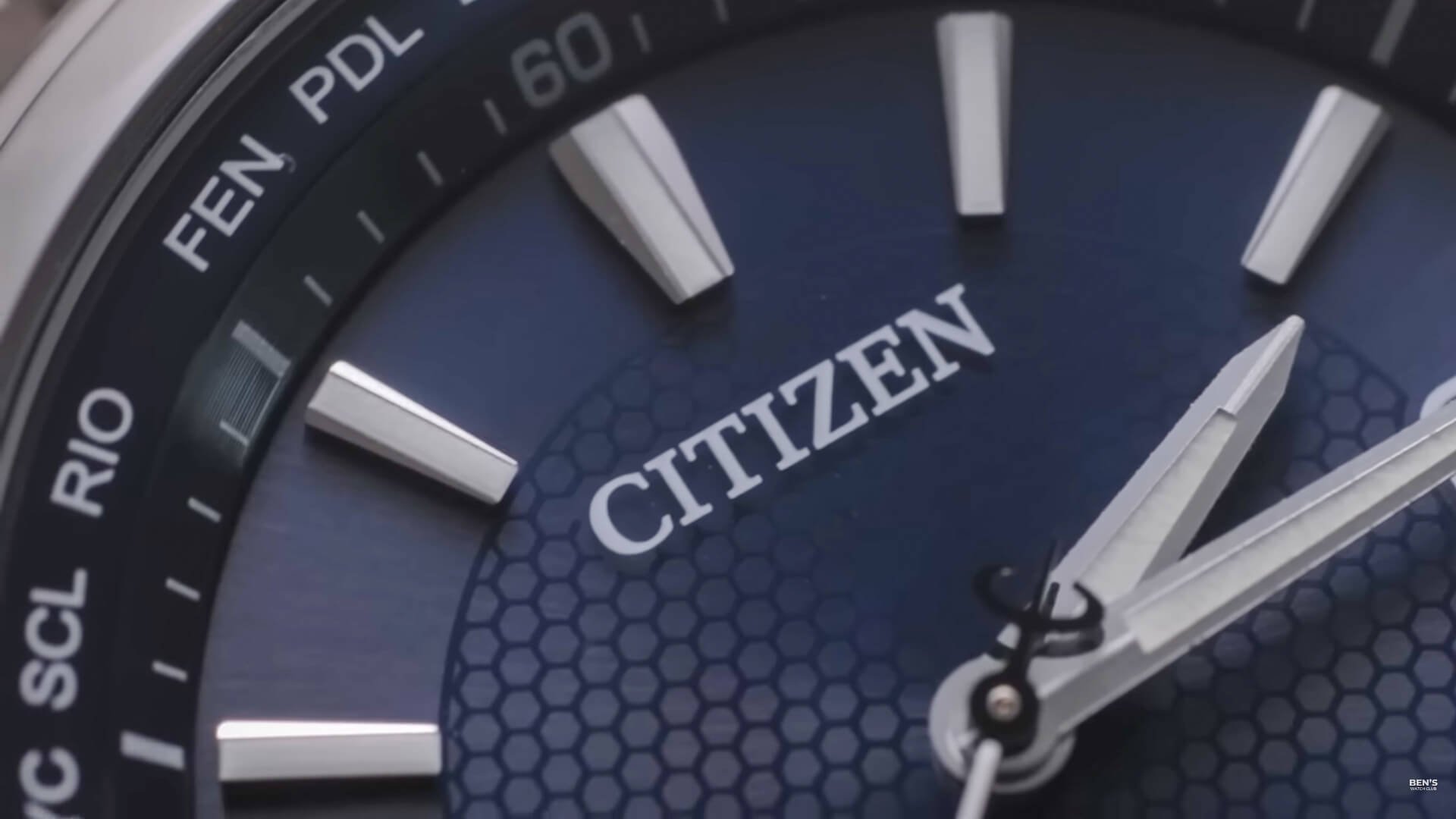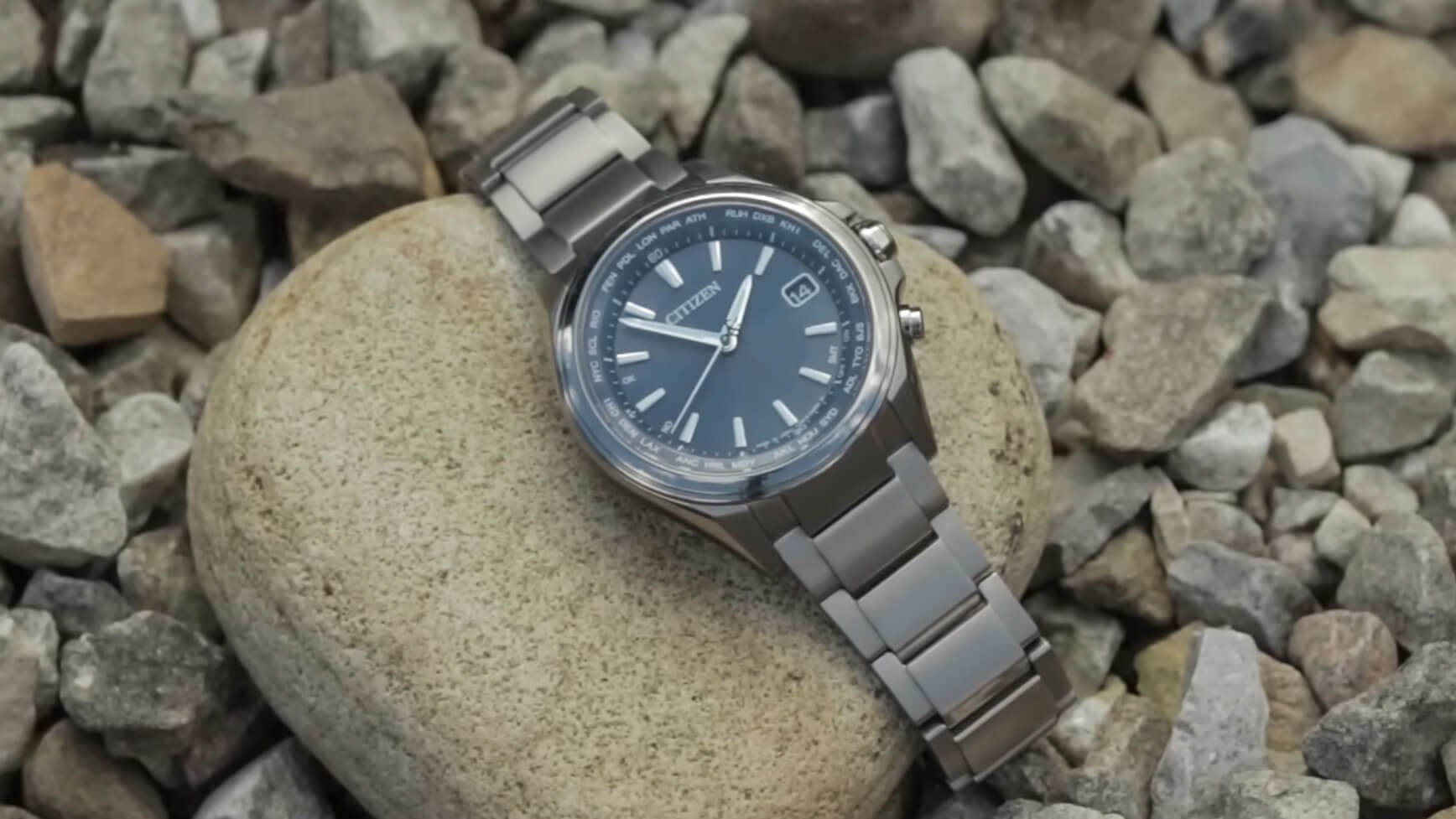Casio Oceanus vs Citizen Eco Drive –Ultimate $500 Titanium Watch Battle
(This page features affiliate links, for more information, click here.)
Japanese giants Citizen and Casio are two of the biggest brands in watchmaking. The former boasts a glittering century-long history of innovation, while the latter sealed its place in pop culture during the 1980s.
Today, these juggernauts find themselves occupying a similar spot in the market. Both cater toward the affordable end of the market, and while Casio dominates the super low-end, the overlap becomes more apparent as you begin to spend more.
Let's say you've got a budget of around $500. Should you go for one of the higher-end Casios? Or is Citizen the obvious choice at that price point?
To find out, I needed something to compare with my existing Casio Oceanus, which I reviewed a few months ago. After several hours of researching, I came up short. My wife then did what wives do best and found the perfect alternative in a matter of seconds.
Meet the Citizen CB1070-56E. It's priced similarly to the Casio, and the spec sheet is remarkably similar.
Construction
I have to say, my wife did a cracking job of matching these up. Not only do they have a similar layout and color scheme, but even some of the finer details are akin to one another. They're also both made in Japan.
Casio Oceanus
Citizen Eco-Drive
Let's begin with the construction. Both watches use treated titanium and weigh within a gram of one another when sized for my wrist, resulting in an equal featherweight feeling during use. The color of each case is the same, though there's no in-depth information about the exact material used in the Casio, with it simply referred to as 'Titanium Carbide' on most listings. This is likely more scratch-resistant than steel, but the lack of specific marketing suggests it won't perform as well as the proven 'Super Titanium' used in the Citizen.
Indeed, Citizen claims their coating is 'five times more scratch-resistant than stainless steel,' and while it's hard for me to test that bold claim, I imagine it will be less susceptible to cosmetic imperfections than the Oceanus.
Nevertheless, this does come at somewhat of a cost.
Casio Oceanus
Citizen Eco-Drive
I'm no engineer, but reportedly, titanium is more challenging to work with than steel. The harder the grade you choose, the trickier it is to maintain the same tone across all components, as some may use slightly different grades or coatings for cost-saving measures. This is likely why the bracelet and case on the Citizen are not a perfect match. The Casio, meanwhile, matches perfectly, possibly due to more consistent hardness across both parts.
Case Finishing
I'm unsure if hardness affects how malleable the case is, but it's immediately apparent that the Oceanus is better finished. Both pieces aim for this faceted look, with steep angular sections and three-sided lugs. While the Citizen isn't poor, it lacks the precise, neatly cut edges found on the Casio. The high shine bezel also doesn't compare to the immaculate Zaratsu polishing on the latter.
Left: Citizen Eco-Drive Right: Casio Oceanus
Water Resistance
The case rears showcase two differing approaches. Casio has opted for a more traditional snapback rear, while Citizen has partially submerged theirs into a shallow cutout, creating a more streamlined body. This helps the Citizen come in with a reduced thickness of just 9.3mm, at no cost to water resistance, matching the Oceanus at a versatile 10bar.
Casio Oceanus
Citizen Eco-drive
Dimensions
The smaller diameter of the Casio would still imply that it wears smaller. However, they have more or less the same wrist presence due to a couple of extra factors.
Firstly, the Casio has a more expansive dial, which visually inflates it from above. Secondly, the fixed end links effectively push the lug to lug length past that of the Citizen, which itself houses a more articulating bracelet.
Watch Bracelets
Unfortunately, both watches have a hidden flaw that mars their versatility, it has final central links affixed to the case, restricting you from using standardized straps. Unfortunately, the Citizen has a similarly frustrating implementation that looks like those on Swatch watches, where the whole end link has been machined into the case itself. While this reduces rattling, it again has the downside of not being compatible with your existing straps.
Casio Oceanus
Citizen Eco-drive
In my books, both executions are anti-consumer, as neither watch seems to be styled with integrated links in mind. They've even faked traditional end links on each. Why couldn't we just have the real thing? Especially at this price!
They are both comfy and at least made of titanium. That on the Citizen is one of their recurring bracelets used across various models. It's reasonable in terms of quality but only has two micro-adjustments, which is rubbish considering the big link size and the fact that the strap can't be changed! If your wrist falls outside the narrow adjustment range, you're out of luck.
If you break it? Yeah, that will be £176!
Casio Watch Clasp
Thankfully that on the Casio is much better. Not only are the links less generic, but the clasp is far better, featuring a concealed slide rail system that allows you to adjust the bracelet on-the-fly. You can shift it to whatever position you deem fit by compressing the pushers. This impressive setup somewhat compensates for the disappointing end link debacle. I have no idea whether replacement bracelets are available for this one, as it's a Japan-exclusive (JDM) model only importable from retailers like Discovery Japan, and I can't read Japanese.
Dial Design
Switching to something more positive, let's analyze the dials. The handset is very similar, with the Casio's primary hands having additional rear overhang and the second hand bearing a different counterweight.
While both dials have dark blue themes and a homologous layout (due to the movement type), I probably prefer the Citizen's look. It has a more subdued sunburst but compensates with a fine honeycomb central portion that adds texture without dominating the aesthetic. The CB1070 also features just a single line of text for the logo, which is cleaner than the triple-stacked imagery on the Oceanus. It also has a more regular yet appealing marker at 12 o'clock that fits the theme much better.
Quality Control
There are a couple of minor quality control issues on the Citizen; if you have a keen eye, you'll notice that some indexes are slightly misaligned. Those on the Casio are more accurately placed and have a more complex shape visible through a macro lens, typically indicative of a higher quality product.
Casio Oceanus
Citizen Eco-Drive
The second hand on this unit also narrowly misses many markers around the circumference, where the Casio hits every time.
The Oceanus also boasts a microscopically ribbed bezel that catches the light in a more pleasing manner.
Citizen Eco-Drive
As an extra boon, both have dark date wheels that blend in well with the dark backdrops, though this varies on alternate color variants of the Citizen. The Casio, meanwhile, only comes in blue-grey.
Watch Glass
Sapphire crystal is atop both pieces, providing brilliant scratch protection. The anti-reflective on the Citizen is marginally better, though neither inhibits the visibility or solar functionality of the dials beneath.
Movement
Indeed, sunlight is all that's needed to power either of these watches. Leave or wear them outside to charge up, and they'll be good to go in no time. They are also radio-controlled, so they'll automatically synchronize to your time zone of choice with unrivaled precision.
This movement type necessitates a special button and crown arrangement, the latter operating more like a selection wheel to cycle through various settings. The second hand also doubles as a pointer, allowing you to select your chosen time zone. Both are easy to use despite the enormous manuals, though the crown on the Citizen is a little tricky to be precise with, as its surface is completely smooth for some reason.
Final Thoughts
I'm a real Casio fanboy, and while I think the Oceanus is a better quality watch, I think I still favor Citizen in this particular head-to-head. It's slightly less expensive, has a more handsome dial, and is more wearable for my skinny wrist due to the end link style.
To be fair, I'd still take the brilliant Casio Lineage over both of these, despite its inferior scratch resistance. Check out that article next by clicking here. You won't regret it!
Disclaimer: The Casio Oceanus was provided by Discovery Japan for a previous review. The Citizen had part of its cost covered by Amazon through their Fashion Influencer program.




















